One of the worst feelings is realizing that the disaster that just occurred could have easily and cheaply been avoided. In this article, we go over some fixes, some of which are cheap and easy, some of which will save you lots of $ over time. Some are fixes that can help you avoid costly disasters in the future.
Burst Proof Hoses
The water supply lines that attach to the back of your washing machine are typically black and have a rubber texture. Those particular ones are, though seemingly fine, can burst.
If you have ever seen (not that you look behind people’s washing machines much) washing machine hoses that are red and blue or silver with a braided looking outer cover well those are the burst proof hoses.
The nice thing is that they cost about $17 bucks and install in a few minutes. Most folks don’t actually have the burst-proof hoses and aren’t really aware of the potential for disaster. Does it really happen though?
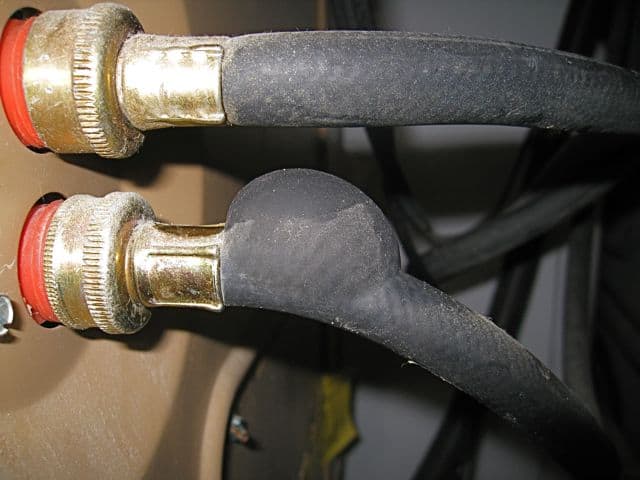
I thought I would ask because sometimes hype is built up around something without there being much substance to it, right?
I had my washing machine guy over recently because my machine was wobbling like crazy in the spin cycle so I asked him about it. He said “oh yeah, they go and when they do it can be bad.
I had a lady whose hose burst and proceeded to shoot up into an opening in the wall and eventually blast 40,000 gallons into her walls!”
How common an occurrence it really is I don’t know but I’ll just as soon drop $17 bucks to avoid finding out! Here’s mine. Put them in last month.
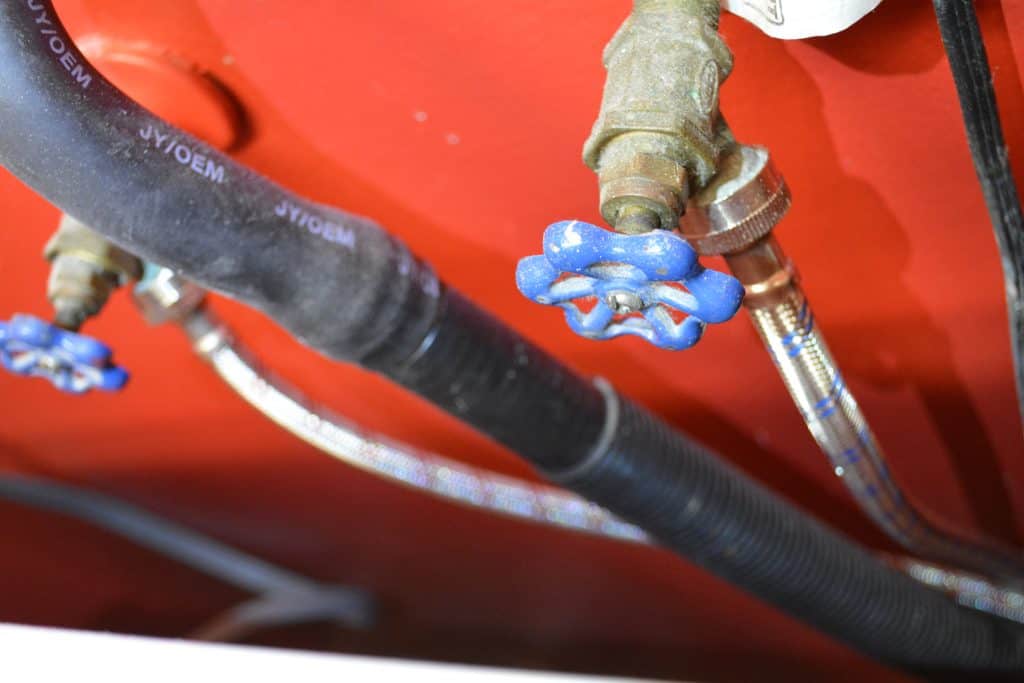
T.P.R. Valves
If you haven’t messed around with your water heater much there’s a chance you’re not familiar with this little doohickey on your water heater called a TPR valve.
It stands for Temperature and Pressure Relief valve. As the name implies, it is a valve that releases excess pressure in the event that your water heater becomes over-pressurized. Here is what this baby looks like:

Ideally, this valve should have a 3/4 inch pipe attached to it and heading straight towards the ground and stopping about 6 inches before the ground OR you might see the pipe disappear into a wall where it exits outside the house (which is even better). But here’s the thing: Sometimes the TPR valve is actually plugged up in some way.
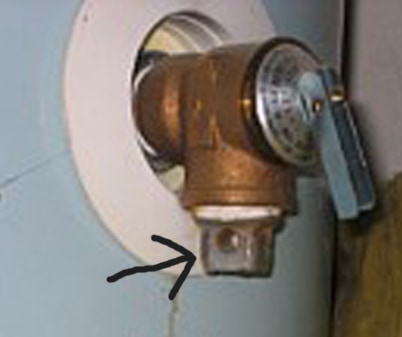
But what is the actual consequence of plugging up your TPR valve? Let me answer that with another photo:
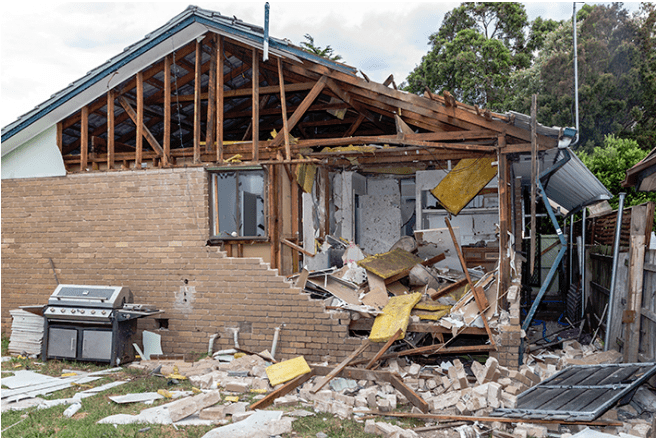
Here’s a house after their water heater went KA-BLOOOEY! Think “hand grenade” because that is the kind of force that is behind these babies when they go. It doesn’t have to go down this way though.
A plugged up TPR isn’t a guarantee of an explosion however if your water heater should over-pressurize for some reason AND its plugged up then you’ve got BIG problems on your hands.
A simple check of your water heater to make sure that its not plugged up and shows no signs of leaking should be all that you need to do.
Water Heater Plug
This is an easy one. If you have an electric water heater you will want to check the plug. First place the back of your hand on it. Is it really hot? That’s not good.
Pull it out of the wall and look at the receptacle and the plug itself. Is there a blackening around either? That’s also not good.
If you see that it means you have an electrical issue and you need to address it sooner than later. This is the kind of thing that causes home fires so you want to stay on top of it.

GFCI’s
Ground Fault Current Interrupter, you will know them by this look:
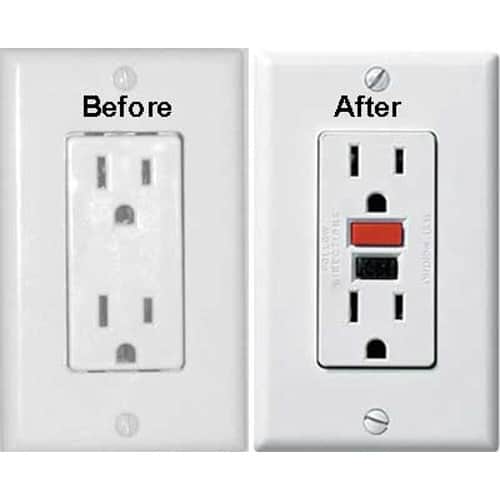
What do they do? In short, they protect that outlet (and any others linked to it) from overheating and ultimately a fire.
For example, if you are working in the kitchen with a stick blender and accidentally drop it into a sink full of water but the receptacle that the stick blender is connected to is GFCI protected then it will close itself off from receiving power.
That means not only will the receptacle not overheat and catch on fire but you, holding the blender, will not get electrocuted. Pretty cool, eh?
Pool Pumps
So you’ve got a pool and your pump is about to pass on to that big pool pump junk yard in the sky and you’re facing a decision: Do replace my pump with a standard single speed pump like the one that was there before or do I pay a bit more for a variable speed pump?
Maybe you’ve heard rumors about how much you can save with a variable speed pump despite the higher purchase cost. Well, let’s look at that is in some more detail (spoiler alert! you save a TON with variable speed pumps).
Take an average 1.5 HP pool pump. On Amazon, you can find a single speed pump by Pentair for $373. The same size and brand pump will cost you nearly double that amount at $645. So far this is a tough sell but stay with me because now we’re going to get into the cost to run these babies.
Running the single speed pump per year will cost you $812 whereas the variable speed pool pump will cost you $380. Now things are getting interesting. Pool pumps will last somewhere between 8 and 12 years.
Let’s take the average lifespan of 10 years in this case and look at the total cost that you will spend to buy and run these pumps. See below for the breakdown:

So as you can see you will be doing yourself a great disservice buying a tired ol’ single speed pump.
Here’s a pic of my pump and I will say that it was easy to install and easy to set. My rule of thumb is to have my pump running as long as there is sunshine in the sky.
Here’s my personal pump speed and time schedule that I have dialed in over the years. Keep in mind that you will need to adjust the timing based on seasons but this will get you started.

Avoiding Costly Leaks
Epoxy the underside of sinks to prevent water damage. This will take a little work but you can definitely pull it off. You can get some of this epoxy at Michaels. You will have to do each side at a time, then the bottom.

If you don’t want to get messy with epoxy you can always go the quick and easy route with this under sink mat.
And if you really want to go high tech there is even a sensor that you can place under your sink that will alert via your phone of an active leak.
Imagine you’re on vacation and actually finding out you have a leak when a leak happens rather than coming back after two weeks to a wet disaster.
Washing machines
Yep, back to washing machines. This is an easy way to extend the life of your faithful laundry servant. Fill your washer with clothes only 2/3 of what you could put in. Why, this seems inefficient?
The greater the laundry load weight, the greater the strain on your washer’s motor, transmission and suspension. While having my new-to-me-but-used washer installed the delivery guy (who also has been repairing them for the last 15 yrs) says the best thing you can do to make your machine last is not overfilling it.
You should be able to get 10yrs out of your machine and this simple technique will help you get there.
Septic Tank Health
No one puts much thought into their septic system until there’s a problem. I mean, outta sight, outta mind, right? Its underground for crying out loud, why WOULD anyone think to think of it?!
Well, there’s a lot of biological activity going on in there I assure you. A lot of that has to do with the bacteria that are having a party in your septic tank.
Its a good thing they are too because they are working night and day to break down all the “stuff” flushed down the toilet. Just like good gut bacteria are healthy for your life, septic tank bacteria are healthy for your septic system.
So help keep the party going (and your bacteria in full swing) by flushing dry activated yeast down the toilet on a monthly basis. About a 1/4oz. (2.5 teaspoons) per month should do it.
♦BONUS♦ A/C Filter
Soooo easy to ignore, poor ol’ A/C filter but sooo deceptively important. Why? Because its the last thing the air in your house passes through before going into your air handler.
Its the last bastion, the final defense for your air handler’s health. So often the filter is ignored and it puts undue strain on your system. This strain causes your air handler to work harder (unnecessarily) and thereby reduces the lifespan of your unit.
A/C’s ain’t cheap! Why not give your A/C every chance to perform at its peak output for the longest time possible. Those filters cost next to nothing compared to a new air handler (and so easy to install, too). The fellas over at George Brazil HVAC agree with this notion too…
So there is my list. I hope you got some useful and actionable nuggets from this article and of course if you have some success stories or tips that have worked for you I want to hear about them! (and so does everyone else) so post in the comments below. thanks!
Oh, and one more thing. If you are getting ready to sell your home and want to get a cleaner inspection report (i.e. fewer items buyers have to negotiate on price with) then check out this article.





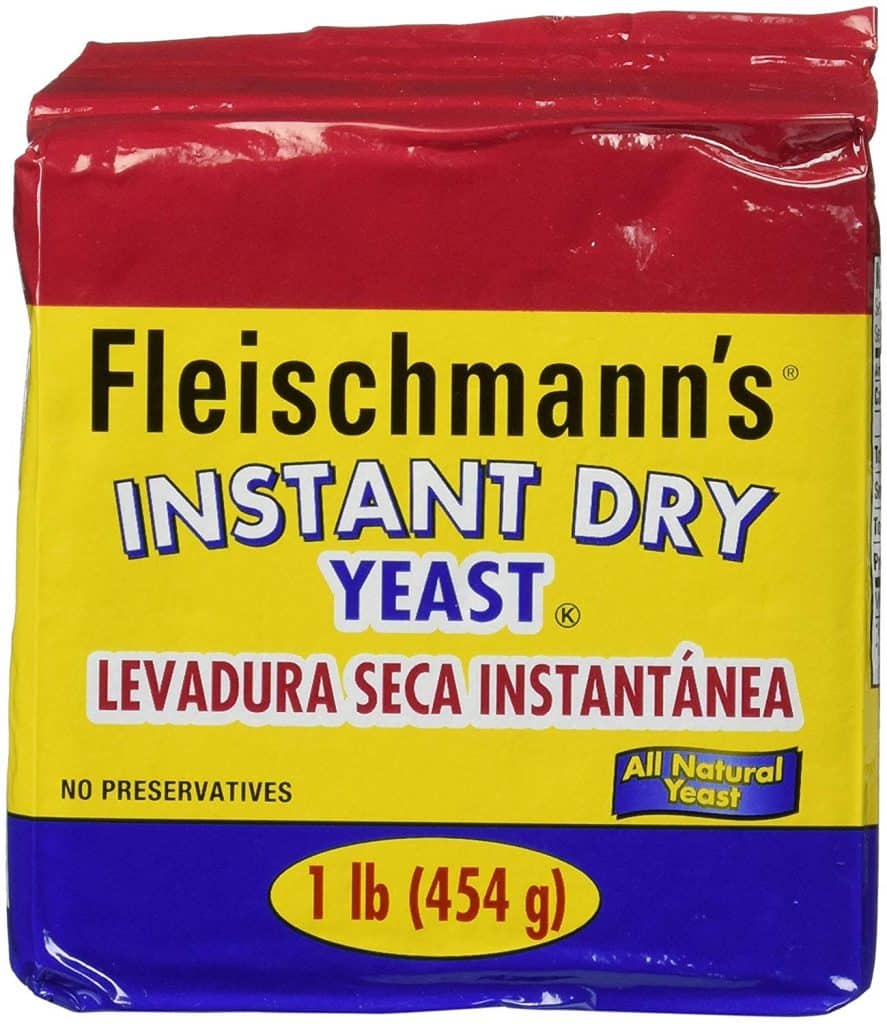
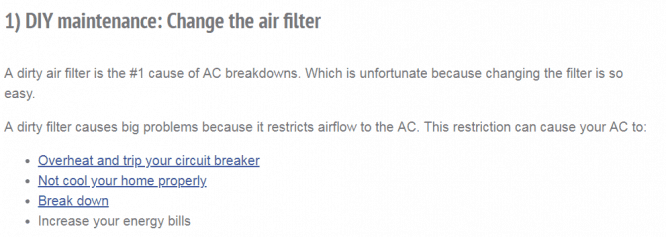



Comments are closed.